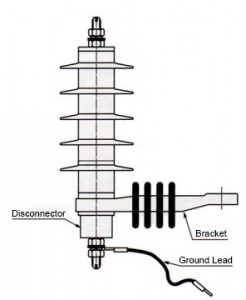Lightning arrester is a protection device that can release overvoltage energy and limit the magnitude of overvoltage withstand on the insulation of the device. It is usually connected between the wire and the ground and connected in parallel with the protected device.
Under normal circumstances, the arrester is in the cut-off state. When the voltage acting on the arrester exceeds its protection value, the arrester is turned on, the resistance drops, and the current is discharged into the ground, thereby limiting the amplitude of the overvoltage to the allowable value of the equipment insulation.To avoid the damage of high-amplitude overvoltage to the equipment insulation, and protect the electrical equipment connected in parallel.

lightning arrester connection
The working process of the arrester includes three processes: pressure limiting, arc extinction and recovery.
Once the arrester discharges under the impact voltage, it will cause a short circuit to ground. After the instantaneous overvoltage disappears, the power frequency voltage continues to act on the arrester. The power frequency short circuit current will flow through the arrester, which is called the power frequency freewheeling. The lightning arrester should cut off this power frequency continuous current in time and restore its insulation state, so that the power system will not trip and power off, and can continue to work normally.
Post time: Apr-21-2020
